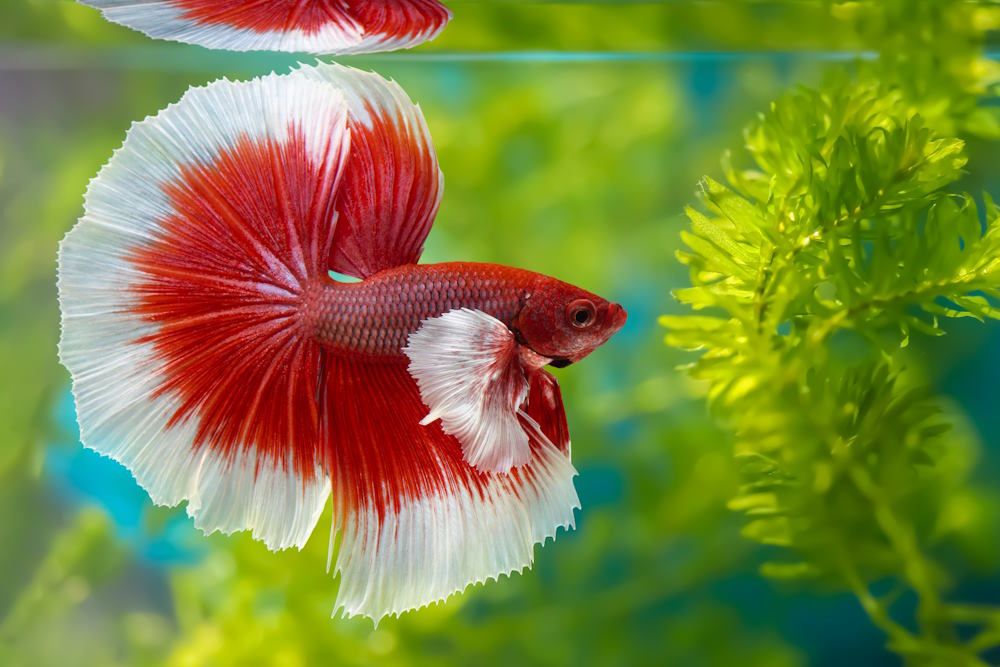Reproducing Betta Fish: a Comprehensive Step-By-Step Guide to Efficiently Raising Infant Bettas From Eggs to Their Adult Years
Reproducing Betta fish is a precise undertaking that needs mindful planning and execution to make certain the successful advancement of fry from eggs to develop fish. Picking genetically diverse breeding sets with preferable qualities is just the start; developing an optimal atmosphere and recognizing the intricacies of the breeding procedure are just as critical. As the male Betta carefully constructs a bubble nest and guards the priceless eggs, the succeeding stages of care and shift demand interest to detail and expertise of ideal practices. How does one navigate the difficult yet satisfying course of supporting these lively creatures to the adult years?

Picking Reproduction Pairs
When beginning on the journey of reproducing Betta fish, choosing the ideal reproduction pairs is vital to accomplishing desirable attributes and a healthy and balanced lineage - betta fish. The very first step in this process is to identify the specific attributes you wish to boost or protect, such as color, fin type, and body form. It is crucial to select genetically diverse sets to avoid inbreeding, which can bring about health and wellness concerns and undesirable characteristics
Review potential reproducing candidates carefully. A healthy male Betta should exhibit lively colors, an energetic attitude, and well-formed fins, while the female must also show vibrant coloration and a rounded belly, suggesting preparedness for spawning. Observing the temperament of both fish is crucial, as hostile or overly reluctant individuals may not breed successfully.
Keeping records of the parent fish's ancestry can help you track genetic characteristics and prospective problems. Ultimately, investing time in the option procedure will dramatically boost the likelihood of producing solid, dynamic children that satisfy your breeding goals.

Preparing the Reproduction Container
Producing an optimal reproduction atmosphere is a key action after choosing appropriate sets for Betta fish. The reproduction storage tank should be especially created to offer convenience and promote the all-natural breeding behaviors of the fish. Begin with a tank dimension of at least 10 gallons to ensure appropriate space for both the man and women Bettas.
Maintain a gentle filtration system to keep the water clean while preventing strong currents that can stress the fish. In addition, an air stone can be contributed to provide oxygenation without interfering with the water surface way too much.
Temperature regulation is crucial; goal for a stable variety of 78-82 ° F(25-28 ° C) making use of a trusted heater. The pH degree ought to be maintained between 6.5 and 7.5, and routine water adjustments are required to make certain high water quality.
Integrate floating plants or spawning sponges to develop hiding areas for the woman, while additionally encouraging bubble nest building by the male - betta fish. Ultimately, ensure the storage tank is cost-free from sharp decorations and any prospective threats, as the well-being of the fish ought to always be focused on throughout this critical phase of breeding.
The Breeding Process
Generally, the reproducing process for Betta fish involves a collection of unique and visible behaviors that show readiness for reproduction. The male Betta starts by building a bubble nest at the water's surface area, which functions as a website for the fed eggs. This nest is essential, as it offers a risk-free atmosphere for the eggs up until they hatch.
Once the nest is established, the man will certainly present courtship habits, such as flaring his fins and showing lively colors to draw in the female. The female, upon picking up the man's readiness, will certainly respond by presenting upright red stripes along her body, signaling her receptiveness.
When the female methods, the male involves in a breeding dancing, often leading to an embrace referred to as the "spawning." Throughout this welcome, the lady releases her eggs, which the male fertilizes instantly. The fed eggs after that fall to the bubble nest, where the male carefully accumulates and returns them to the nest. Following this, the male thinks duty for safeguarding the nest and guaranteeing the safety and security of the eggs till they hatch, typically within 24-36 hours. This phase is vital in the breeding procedure, laying the structure for successful fry growth.
Taking Care Of Betta Fry
Looking after Betta fry calls for cautious focus to their atmosphere and nutrition to make certain healthy development and development. After hatching out, Betta fry are incredibly tiny and susceptible, demanding a steady and tidy habitat. Keeping a water temperature in between 78 ° F and 80 ° F is essential, as Betta fry grow in warm problems. In addition, guarantee that the water is devoid of dangerous contaminants; normal water changes of 10-20% are advised to keep ideal water quality.
Feeding Betta fry is just as vital. Feed her response them tiny quantities a number of times a day, being careful not to overfeed, which can lead to water top quality concerns.
Transitioning to Grownup Bettas
As Betta my sources fry fully grown, transitioning them to grown-up Bettas is an important phase that calls for mindful management of their environment and social communications. This procedure normally begins when the fry reach around 6 weeks old, at which factor they can be slowly introduced to an extra organized living setting.
To facilitate this change, it is necessary to guarantee that the water parameters-- such as temperature, pH, and ammonia levels-- are optimal and secure. Adult Betta fish thrive in cozy water (around 78-80 ° F) with a pH of 6.5 to 7.5. Gradually adapt the fry to these conditions to decrease tension.
Social interactions are one more key aspect; male Bettas are notoriously territorial and hostile. For that reason, it is suggested to separate men right into individual storage tanks as they grow. Women Bettas can be housed together, however treatment should be taken to check for signs of hostility.
In addition, dietary modifications need to be made as the fry grow. Integrate high-quality pellets and live foods to support their growth and wellness. By taking care of these elements successfully, you can advertise an effective transition to their adult years for your Betta fish.

Verdict
Effective reproduction of Betta fish calls for mindful interest to detail throughout the entire process, from picking genetically varied sets to supplying ideal look after fry. By making certain appropriate reproduction problems and preserving water top quality, the likelihood of healthy and balanced children boosts dramatically. In the original source addition, a well balanced diet plan and progressive adaptation to grown-up atmospheres are important for the growth and growth of Betta fish. Complying with these steps vigilantly fosters a growing populace of Betta fish, improving both their health and vigor.